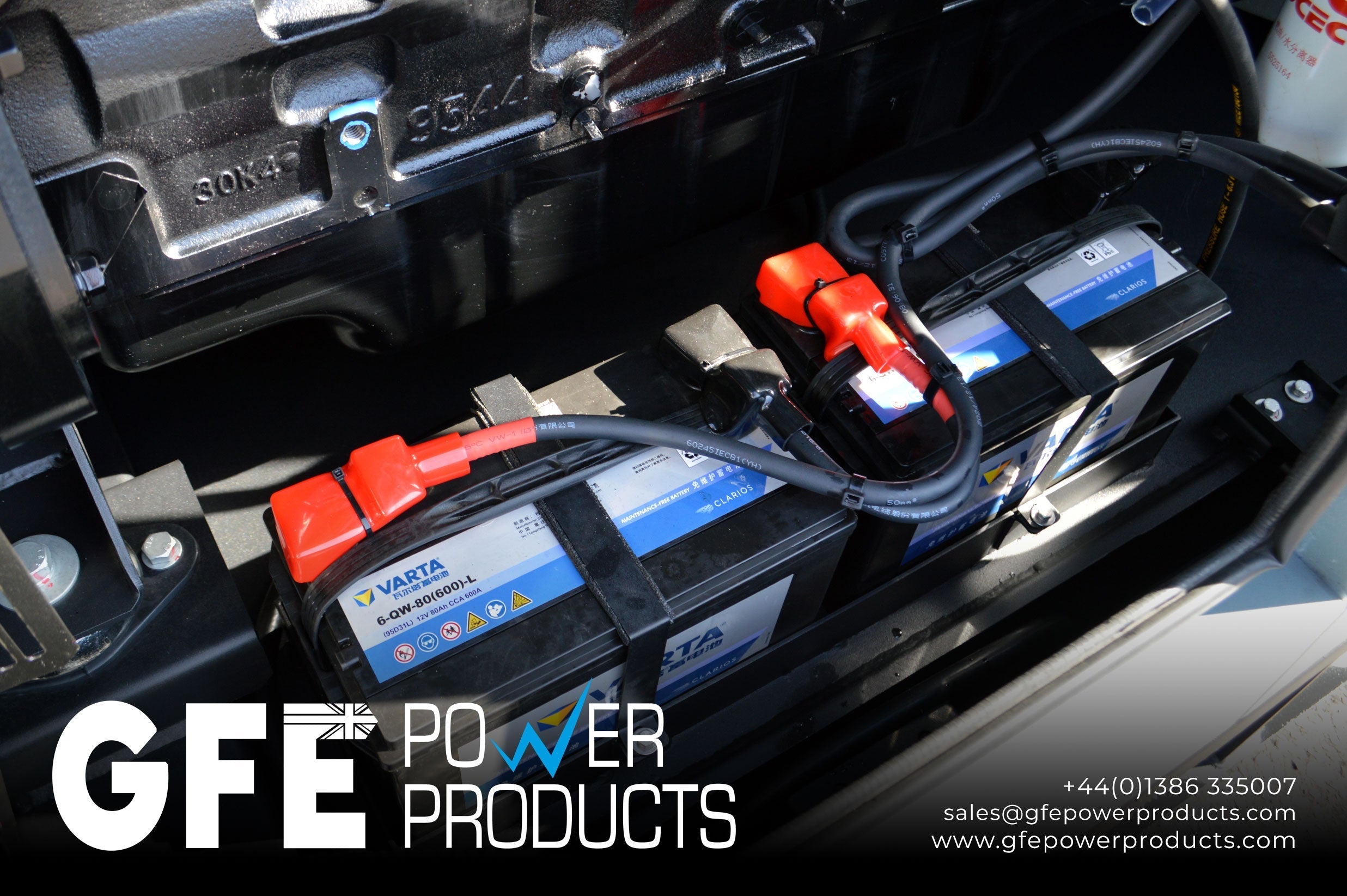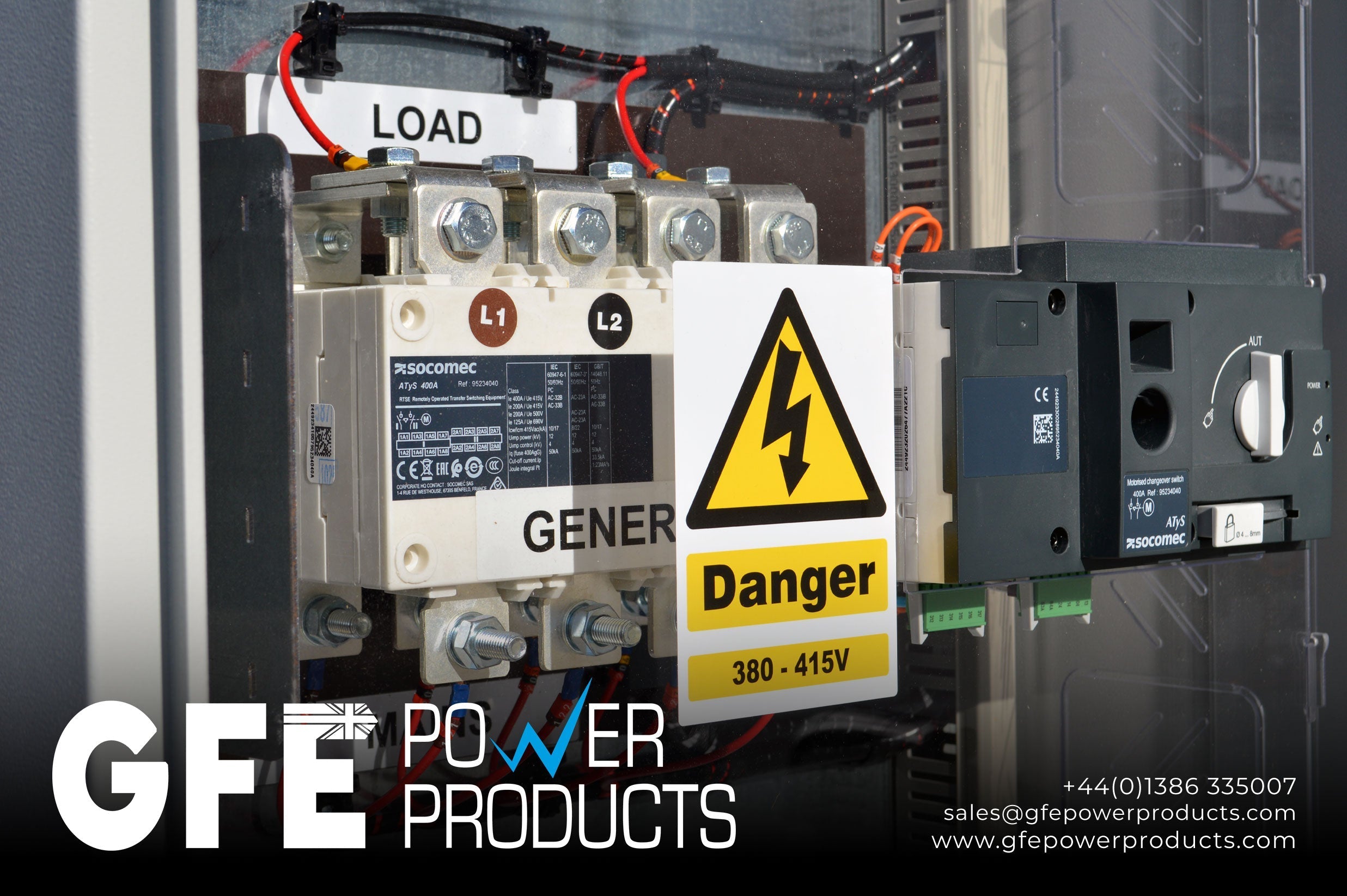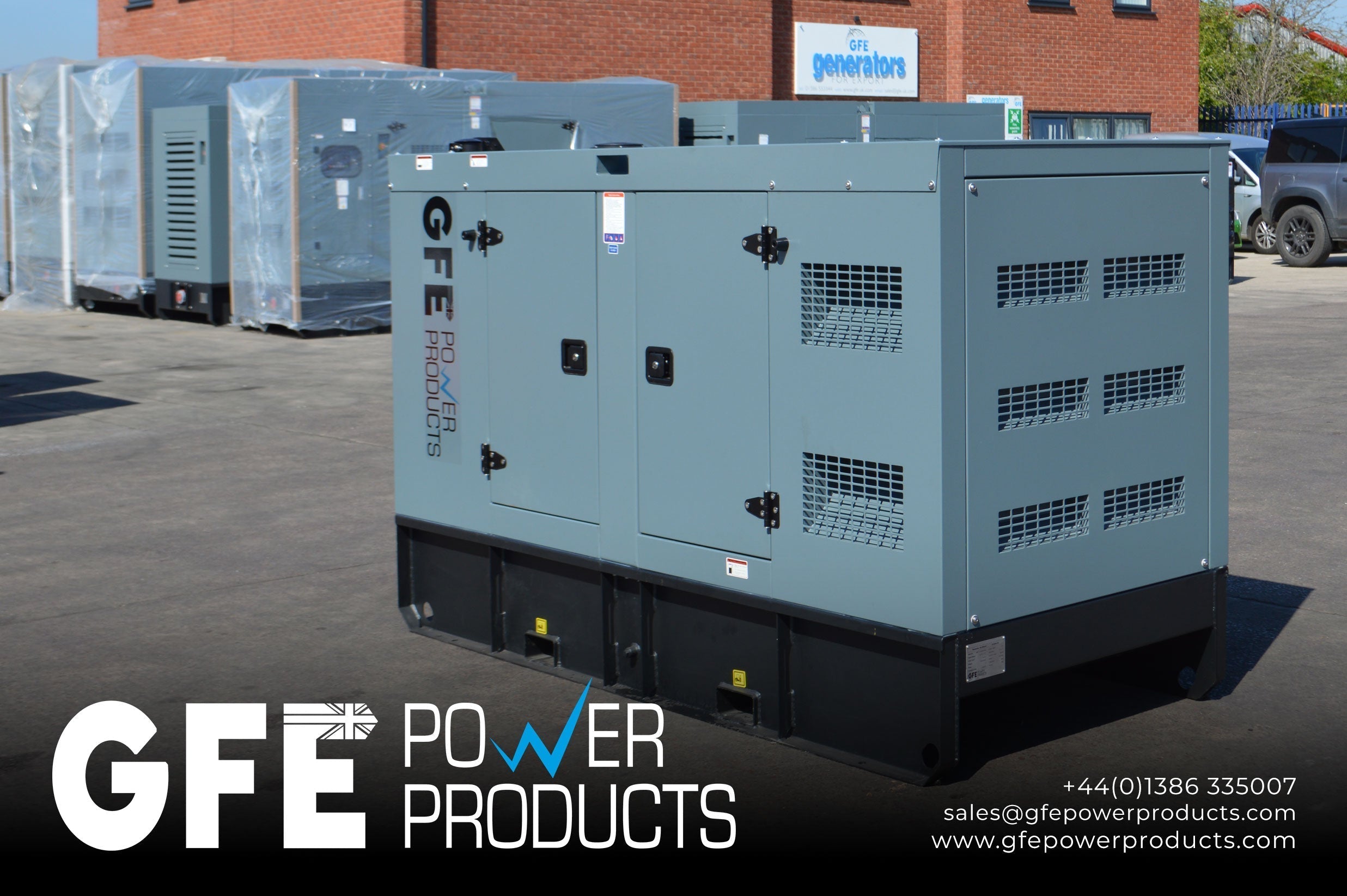
Maintaining Your Generator’s Battery for Reliable Performance
When it comes to generator reliability, the battery is often overlooked until it fails. Whether you're relying on a generator for backup power during an outage or running it daily in a prime power setting, the battery is the heart of your generator’s starting system. Without a healthy battery, even the most advanced generator can’t do its job.
At GFE Power Products, we understand the critical role batteries play in diesel and gas generator systems. In this post, we’ll take a closer look at how to care for your generator’s battery to ensure it’s ready when you need it.
Why Battery Maintenance Matters
A generator battery doesn’t get much attention until it’s flat. But regular maintenance helps avoid costly downtime, especially in standby units where long periods of inactivity can lead to discharge, corrosion, or sulfation.
Common consequences of battery neglect include:
- Failed start attempts during critical power outages
- Increased wear on starter motors and charging systems
- Reduced battery lifespan and replacement costs
- Potential damage to control systems due to voltage issues
Ensuring your generator’s battery is in top condition can mean the difference between seamless power continuity and a sudden blackout.
Types of Generator Batteries
Most industrial generators use one of the following battery types:
- Lead-Acid (Flooded): Affordable and reliable, but requires regular top-ups and venting.
- AGM (Absorbed Glass Mat): Maintenance-free and sealed, ideal for low-maintenance setups.
- Gel Batteries: Longer lifespan and resistant to vibration, but sensitive to overcharging.
- Lithium-Ion: Lightweight and high-performance, though more expensive and less common in standard gensets.
Regardless of the type used, battery health management is essential.
Routine Battery Maintenance Tasks
To maintain peak performance, schedule regular checks and servicing.
- Weekly or Biweekly:
- Visual inspection for corrosion, cracks, or leaks.
- Check terminals for tightness and cleanliness.
- Battery indicator or charge level (if available).
- Monthly:
- Measure voltage: Healthy batteries should read ~12.6V to 13.2V when fully charged.
- Test specific gravity (for flooded batteries) using a hydrometer.
- Clean terminals and apply anti-corrosion gel.
- Quarterly or Biannually:
- Load test the battery to assess real-world performance.
- Inspect cables and connections for wear or insulation damage.
- Verify charging system output during engine operation.
For Baudouin-powered generators, or any of the advanced gensets we supply at GFE Power Products, these steps are even more crucial because modern engines rely heavily on digital ECUs and sensors that need stable voltage to function correctly.
Storage and Standby Battery Considerations
Generators that sit idle for long periods need special attention. Infrequent use can lead to:
- Self-discharge: Even sealed batteries lose charge slowly over time.
- Sulfation: Lead sulfate crystals can harden and reduce battery capacity.
- Internal corrosion: Especially in poorly ventilated or humid environments.
Best practices for standby generator batteries:
- Install a smart battery charger or float charger, at GFE we fit these as standard.
- Test the battery under simulated load monthly.
- Avoid storing batteries in areas with extreme heat or cold.
- Replace batteries proactively every 2–3 years, even if they appear fine.
Signs of a Failing Generator Battery
Be on the lookout for these early warning signs:
- Slow or failed crank at start-up
- Frequent low voltage alarms
- Corroded or swollen terminals
- Irregular voltage readings during testing
Addressing these signs early can prevent a complete failure during an emergency.
Battery Replacement and Sizing
Not all generator batteries are created equal. Always replace with a battery that matches the OEM specifications for:
- CCA (Cold Cranking Amps): Ensure enough power for startup.
- Voltage and capacity: Typically 12V, but some systems use 24V.
- Terminal configuration: Prevents fitting issues and cable strain.
At GFE Power Products, we can help source the correct battery for your specific generator model whether it’s a new Baudouin unit or another trusted brand.
Battery Monitoring Systems (BMS)
Some modern generators, especially those paired with digital controllers or remote monitoring solutions, include Battery Monitoring Systems that:
- Track real-time voltage and current
- Alert operators to battery deterioration
- Predict failure before it happens
If you’re running critical operations, we highly recommend investing in a genset with BMS or retrofitting your unit with battery monitoring tools.
Don’t Let Your Battery Be the Weak Link
A generator’s battery may be small, but its role is massive. At GFE Power Products, we help businesses stay powered with expert guidance, replacement parts, and ongoing support.
If you’re unsure about the condition of your generator’s battery or if you want to implement a proactive maintenance strategy- our team is here to help.
Trust GFE Power Products to keep your generator and its battery running at peak performance.
Phone: +44 (0)1386 335007
Email: sales@gfepowerproducts.com



